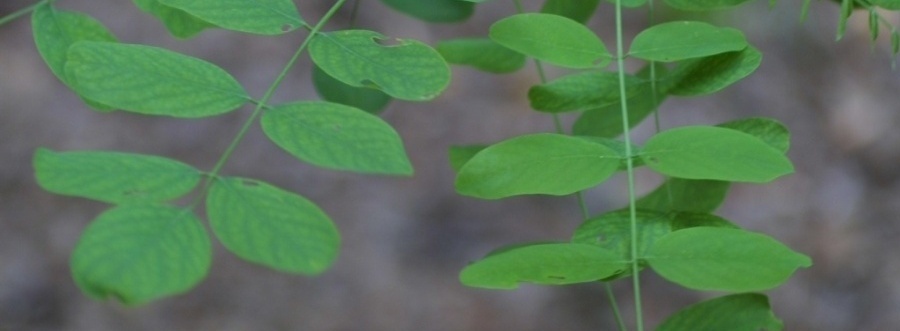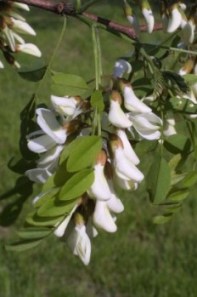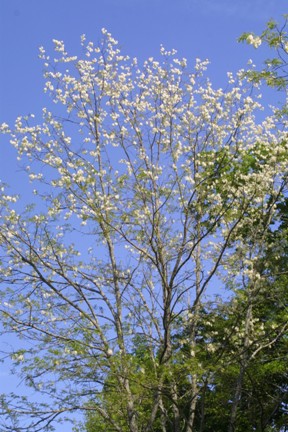
Interactions
What sort of relationships does the black locust share with other organisms?
Steven
J. Baskauf, 2003
Bioimages
 Robinia pseudoacacia shares many different relationships with
a variety of organisms! One such example is the mutualistic
association it can have with certain fungi classified under the
phylum Glomeromycota. A mutualistic relationship is a
relationship which is beneficial to both organisms involved.
This phylum of fungi is known to have intimate relationships
with the roots of plants. Thanks to the fungi, plants get extra
nutrients from the soil. In return, the fungi receive sugars
from the plants.
Robinia pseudoacacia shares many different relationships with
a variety of organisms! One such example is the mutualistic
association it can have with certain fungi classified under the
phylum Glomeromycota. A mutualistic relationship is a
relationship which is beneficial to both organisms involved.
This phylum of fungi is known to have intimate relationships
with the roots of plants. Thanks to the fungi, plants get extra
nutrients from the soil. In return, the fungi receive sugars
from the plants.
Steven J. Baskauf, 2003.
Bioimages

As I mentioned on my
Habitat page, Robinia pseudoacacia is a
primary producer in the forest ecosystem. Other organisms like
insects can be found munching on the leaves of the tree. Mammals
that are herbivores, meaning that they only consume plants and
no meat, may also consume parts of the
tree like the leaves. Eat too much of these
structures, however, and an organism may become poisoned due to
the toxins I described on my
Adaptations page.
Read on to my Fun Facts page to learn a few more odds and ends about Robinia pseudoacacia!
Return Home